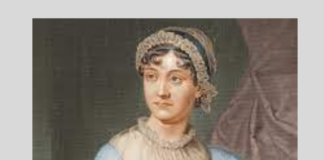Debatably regarded as Agatha Christie’s masterpiece, The Murder of Roger Ackroyd is a novel set in the fictional town of King’s Abbot. The plot of this novel starts with the death of Mrs. Ferrars who overdosed herself on Veronal. Thereafter, Ralph Paton is found murdered in his study, and to find out the murderer Flora Ackroyd asks Dr. Sheppard to help her convince Sheppard’s neighbour, “ Mr. Porrott” – who is actually the famous detective, Hercule Poirot. Poirot agrees to find out the murderer , but he also said that he’ll go into the very end of the case. It means that once he starts the investigation, he’ll not stop until the very end, and throughout this process many things may come into light, but at that time he can’t stop the case in the middle. And finally, arranging all the facts and clues in a logical manner, Poirot solve the case in a very brilliant manner. It is his use of his little grey cells which makes him an extraordinary detective. This is the reason why The Murder of Roger Ackroyd came third in a global vote to find the world’s favourite Agatha Christie books for her 125th birthday.
Detalied Analysis of the Book
This novel is consisted of the following characters :
• Mrs. Ashley Ferrars – A wealthy widow of King’s Abbot, and she poisons herself which is known in the very first page of this novel.
• Mr. Ferrars – Husband of Mrs. Ferrars, and was already dead before the novel starts.
• Roger Ackroyd – Victim of this novel, who is found murdered in his study. He is a wealthy businessman of King’s Abbot.
• Ralph Paton — Roger Ackroyd’s stepson, often referred to as an adopted son of him.
• Ms. Paton – Mother of Ralph Paton
• Dr. James Sheppard – Physician of King’s Abbot, and narrator of this novel.
• Caroline Sheppard – James Sheppard’s sister, who likes gossiping a lot
• Hercule Poirot – The Belgian detective of Christie who solves the murder mystery of Roger Ackroyd in this novel.
• Flora Ackroyd – Roger Ackroyd’s niece, and daughter of Mrs. Ceicil Ackroyd
• Mrs. Ceicil Ackroyd– Roger Ackroyd’s sister -in – law.
• Elizabeth Russell – Roger Ackroyd’s housekeeper.
• Charles Kent – Son of Elizabeth Russell
• Ursula Bourne—Roger Ackroyd’s parlour maid
• Major Hector Blunt – Roger Ackroyd’s friend
• John Parker – Butler of Roger Ackroyd
• Inspector Raglan – Police Inspector of nearby town, Cranchester.
• Inspector Davis – Local Inspector of King’s Abbot
• Mr. Hammond – Roger Ackroyd and Mrs. Ferrars’ lawyer
• Elise Dale- housemaid
• Ship Steward – Unknown male patient of Dr. Sheppard
Divided into total 27 chapters, this novel is narrated by Dr. James Sheppard, physician of King’s Abbot.
On the night of 16-17th September, 1926, Mrs. Ferrars died. It is said that she overdosed herself on Veronal, a barbiturate drug. On 18th September, Dr. James Sheppard came to know the incident. Though he was about to go there, but it was too late. He told this matter simply as he only talked about her cause of death, but Caroline arguably points out the fact that Mrs. Ferrars died out of remorse because she killed her husband the previous year. After that, the narrator gives a vivid portrayal of Caroline : “ Caroline can do any amount of finding… amazingly expert.” ( Page 2). Thereafter they had discussion on the various facts and reasons related to the death of Mrs. Ferrars, and both of them holds different viewpoints. Not only on this point, throughout the novel the characteristic of Caroline and Dr. Sheppard are different from each other. Then the narrator introduces the closely knit society of King’s Abbot, and the inhabitants living there. This chapter also reveals the two important houses of King’s Abbot, namely King’s Paddock ( house left by Mr. Ferrars to Mrs. Ferrars), and Fernly Park ( house of Roger Ackroyd). Then it describes the character of Roger Ackroyd. Roger Ackroyd was a wealthy businessman who had a son named Ralph Paton. Ralph Paton was the son of Ms. Paton by another marriage i.e. Roger married Ms. Paton but Ralph was not his biological son. After the death of Ralph’s mother, Roger Ackroyd was rumoured to have affairs with Mrs. Ferrars.
While Sheppard was crossing paths with Roger, Roger invited Dr. Sheppard for a dinner as he had something to discuss with Sheppard. On that very day, housekeeper of R. Ackroyd i.e. Miss Russell visited Dr. Sheppard, and asked him for a way to cure drug addiction. Moreover, in that afternoon, Sheppard visited his mysterious neighbour named “ Mr. Porrott.” Poirot claims that he has come to that place to grow vegetable marrows, but at the same time he also asserts the fact that he has been unable to turn his back on his old profession.
In the evening at about 7:30, Sheppard visited Roger Ackroyd where Mrs. Ceicil Ackroyd, Flora Ackroyd, Major Hector Blunt and Geoffrey Raymond was also present. After the dinner, Roger asked Sheppard to have a talk with him in his study room. In the conversation between them, Roger revealed his relationship with Mrs. Ferrars, and also told that someone is blackmailing her. At this very point of time, John Parker entered the room with the evening mail which also includes the envelope containing the name of the blackmailer of Mrs. Ferrars.
Though Sheppard asked Roger Ackroyd to read out the letter, but Ackroyd refused to do so. Sheppard leaves Rogers’s house at around 8:50 P.M. He also told its readers that while coming to his house, he passes by a mysterious yet oddly familiar stranger. After reaching home, Sheppard got a call which informed the death of Roger Ackroyd, and he quickly runs there. Though he told that Parker informed him about the incident but Parker himself was confused and claimed not to have called Sheppard. Then two men broke into Rogers’s study, and found that he had been stabbed in the neck. Sheppard began to examine the body and told that he had been dead for almost half an hour.
Raymond checked the room to know whether something had been stolen, but he found none. However, Sheppard noticed that Mrs. Ferrars’ letter had been missing. Thereafter a lot of things were put forwarded by the other characters when police took everyone’s testimony.
The next morning, Flora urged Dr. Sheppard to helped her to convinced Mr. Porrott – who is actually the famous Belgian detective, Hercule Poirot- to take the case and found out the criminal at once. Poirot agreed to took the case, however, he also warned everyone that he would follow the case until the very end, no matter how painful and bitter the conclusion would be. Everyone agreed to the condition, and hence Poirot started to investigate the case. Everyone came in the suspicious radar of Hercule Poirot.
Rather than searching the floor for clues, Poirot possess an extraordinary quality of reading human mind. By observing the human nature, he could tell all the secrets. Throughout the investigation, there were many suspects with their solid motives. After summing up all the clues that came out throughout the investigation, Poirot came to know about the murderer which is the narrator i.e. Dr. Sheppard.
Finally, Poirot ended the case by giving Dr. Sheppard two choices : either surrendering himself to the police force or by killing himself. Sheppard opted for the second choice and he wrote a confession letter, and overdosed himself with sleeping medication. He trusted that Poirot and Inspector Raglan would kept it a secret so that his sister, Caroline won’t know that her brother was a murderer. According to many readers, Caroline might found out the truth someday as it is possible to a great extent.
Thus, the book shows how in a closely knit society, there lived a murderer, which also shows the character’s duality. Gossiping is an important theme of this book as during the investigation, the news that Caroline got from gossiping helped Poirot a lot. The human tendency of keeping secrets also came into light where everyone was found to hide their secrets. The book contains the perfect combination of deceit, suspense and detection.
Some of the reviews, and awards of this book, and its author are listed below:
Agatha Christie was regarded as the greatest crime writer by the Crime Writers’ Association ( CWA ) in 2013.
The Murder of Roger Ackroyd was acknowledged as “ a well – written detective story” by the Times Literary Supplement ( 10th June, 1926).
“Makes breathless reading from first to the unexpected last” by Observer ( 30th May,1926).
It has been adapted into play as well as film namely Alibi.
Author’s Biography
Dame Agatha Mary Clarissa Christie, or simply Agatha Christie is often considered as the “Queen of Crime Fiction.” Born in the year of 1890 at Torquay, Devon, in the southwest part of England, who as a child enjoyed fantasy play and creating characters. At the age of 16, she moved to Paris for a period of time to study vocals and piano.
She was married to Colonel Archibald Christie ( pilot of Royal Flying Corps) in the year 1914, and she took up nursing during the First World War ( 1914 – 1918).
Her first published detective novel is The Mysterious Affairs at Styles whose plot revolves around the murder mystery of a rich heiress. It is in this novel where she introduces her world renown Belgian detective, Hercule Poirot. This character of Christie also makes it clear that in her creation of detective fiction, she is indebted to the creator of Sherlock Holmes i.e. Sir Arthur Conan Doyle. Like Doyle’s Holmes, Christie’s Poirot is the committed person who solves the murder mysteries. He appears in almost 25 novels, and many short stories of Agatha Christie.
Besides Poirot, she has used other sleuths like Miss Marple, Tuppence and Tommy. As for example, in her 1922 novel, The Secret Adversary, the married couple Tuppence and Tommy is seen; and in her 1930 novel, Murder at the Vicarage, her sleuth Miss Marple is seen. However, she had used another detective namely Colonel Race, who appears in her 1924 novel, The Man in the Brown Suit.
Christie achieve the stardom status after the publication of her 1926 novel, The Murder of Roger Ackroyd, and this was followed by almost 75 novels that made best seller list and were serialized in popular magazines in England and the United States. But luckily in this very year, two months before the novel appeared, her mother died; and two months after publication, Archibald announced that he wanted a divorce. These facts made Christie’s subsequent breakdown and flight merely underlined the fact that her life had changed into something unrecognisable.
Everyone thought that she was dead, but later on she was discovered to be alive. So, the public believed that Agatha had perpetrated an eleven day conjuring trick to deploy extreme cleverness in writing of her novel, The Murder of Roger Ackroyd.
In 1928 Christie got her divorce and in the year of 1930, she married an archaeology professor, Max Mallowan. She travelled with him on several expeditions which are later recounted in the 1946 memoir Come, Tell Me How You Live. The year in which she was remarried also saw the release of Murder at the Vicarage, another classic novel of hers.
In the mid- 1930s Christie began to write some more interesting novels in which she created a situation that seemed highly unrealistic, and then she placed characters to act for the most realistic reasons into that unrealistic situations.
Besides, she also wrote seventeen plays which also includes The Mousetrap (1952), which set a world record for the longest continuous run at one theatre in London for more than thirty years. Her other plays include Witness for the Prosecution (1953), Towards Zero (1944), Spider’s Web ( 1954), Black Coffee (1930), Verdict (1958), Akhnaton (1937), Go back for murder (1960), The Unexpected Guest (1958) and a few more.
Agatha Christie also wrote romantic non – detective novels, of which Absent in the Spring (1944) is one of the examples. It was written under the pseudonym, Mary Westmacott. Christie was crowned with the title, Dame of the British Empire- a title given by the English king or queen in honor of a person’s extraordinary service to the country or for personal merit. She died on 12th January, 1976 in Wallingford, Oxfordshire.
List of Some of Her Important Works
A) The Mysterious Affairs at Styles (1920) — Agatha Christie’s debut novel, The Mysterious Affairs at Styles was written in 1916, and was first published in the year 1920. It is in this novel where Christie introduces her famous Belgian detective, Hercule Poirot. When Poirot was given the task to find out the murderer of Emily Inglethorp, he interrogates his suspects before coming to the conclusion.
In the year of 1990, this mysterious detective fiction of Christie was adapted as a television series namely ‘Poirot’ which was directed by Ross Devenish, and David Suchet plays the role of Poirot.
The novel is set in a large isolated country manor, and the story is told in first person with Arthur Hastings as the narrator.
B) The Secret Adversary (1922) — The Secret Adversary is Agatha Christie’s second published detective novel. In this novel, Christie introduces the characters of Tommy and Tuppence. They also appeared in another three Christie’s novels.
This novel of Christie was reviewed as “a whirl of thrilling adventures” by The Times Literary Supplement in it’s January 1922 edition. Moreover, it also states the characters of Tommy and Tuppence as “refreshingly original.”
C) Murder on the Orient Express (1934) — Originally published in 1st January, 1934, the plot of this novel revolves around the murder of Ratchett, and Poirot is asked to investigate the matter. Poirot agreed to solve the case, and starts his investigation. He found the real identity of Ratchett, and the possible motives for this murder. During the investigation process, he discovers that everyone in the coach had a connection to Armstrong family, and therefore had a motive to kill Ratchett.
The Times Literary Supplement complimented Christie for making “ an improbable tale very real,” Robert Barnard has called this novel as “the best of railway stories.”
D) Ten Little Niggers (1939) — Ten Little Niggers, also known as And Then There Were None is another important novel of Christie. The plot revolves around the murder mystery of ten victims, of which eight are the guests who are invited to the island, and the other two are the caretakers of the island. Each of them was murdered in a way that resembles the lines of the rhyme “Ten Little Niggers.” Moreover, ten figurines were there on the dining table, and each time one was killed, the figurines started to reduce. In the last part of the plot, Vera shoots Lombard and then hangs herself for committing the crime. Though the ending part is a little complicated one, Agatha Christie makes it clear
Besides these, she also wrote other important novels like The Man in the Brown Suit (1924), The Big Four (1927), The Mystery of the Blue Train (1928), Death in the Clouds (1935), Murder in Mesopotamia (1936), Death on the Nile (1937), Appointment with Death (1938), Sad Cypress (1940) etc.










